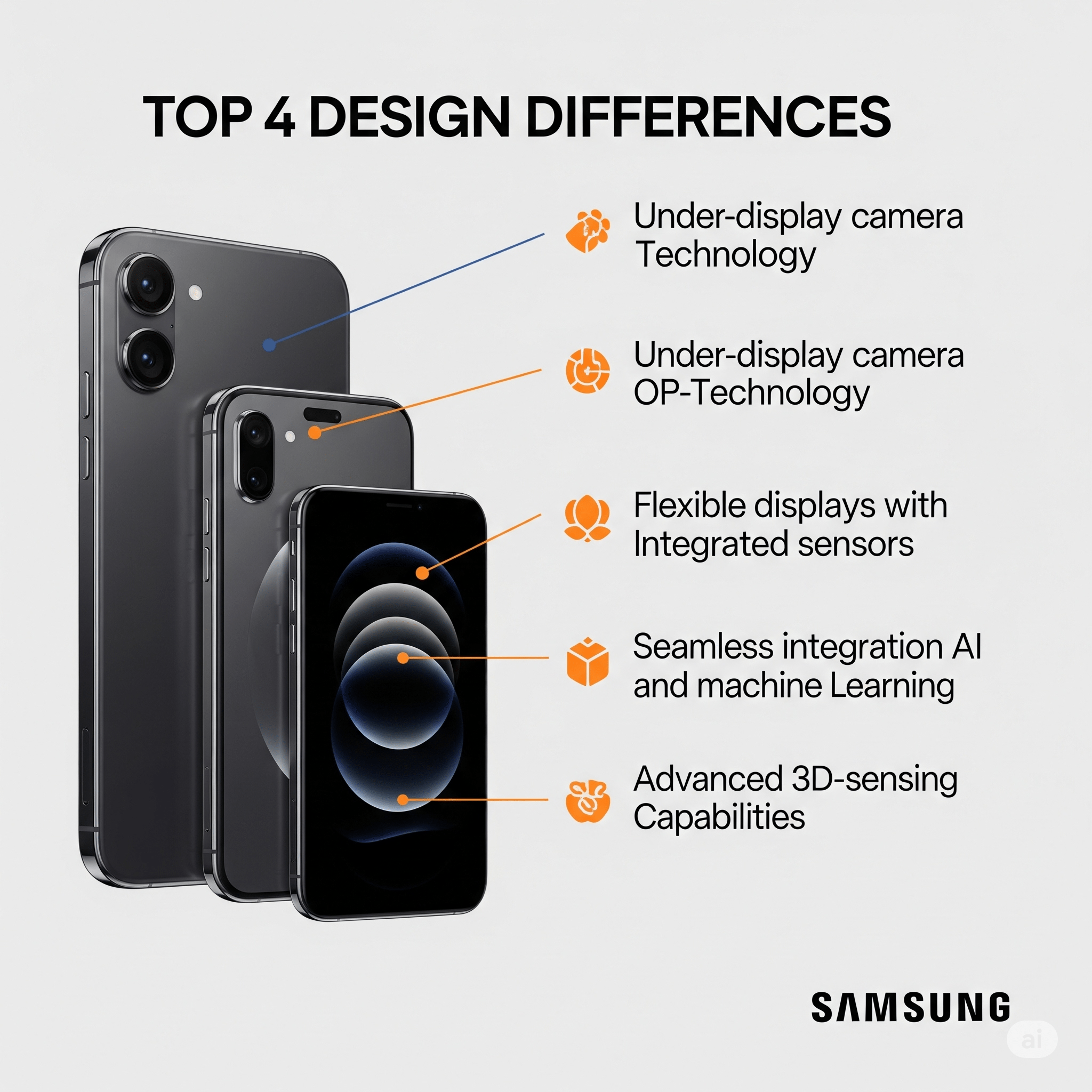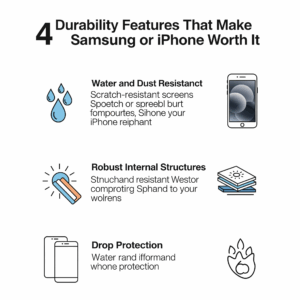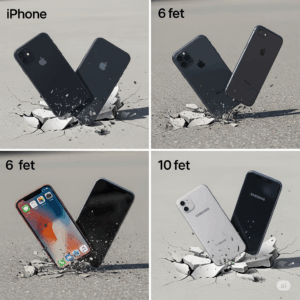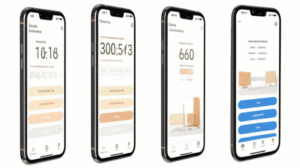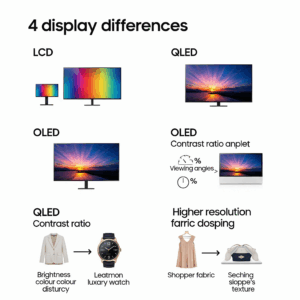In the competitive world of mobile devices, two brands continue to dominate the conversation: Apple’s iPhone and Samsung’s Galaxy lineup. With the 2025 models now widely available, many online retailers and eCommerce entrepreneurs are asking the same question—which phone offers better design advantages for today’s digital lifestyle? Whether you’re building a tech accessory store or optimizing your mobile shopping experience, understanding these differences is key.
Here are the top 4 design differences between iPhone and Samsung in 2025—and how each might influence your Shopify store strategy.
1. Display and Bezel Aesthetics
Samsung has fully embraced its edge-to-edge Infinity Flex display with almost no bezel, even integrating the front camera beneath the screen in its Galaxy Z and S series. This gives Samsung phones a more futuristic, immersive look.
iPhone, on the other hand, continues to favor symmetry. While Apple’s Dynamic Island notch is smaller than ever in the iPhone 17, it still breaks the screen uniformity slightly compared to Samsung’s ultra-clean front design.
eCommerce Impact: A cleaner display may influence consumer decisions, especially if your store sells phone accessories or screen protectors.
2. Material & Texture
Samsung’s 2025 flagship phones lean into matte titanium finishes with curved backs that enhance grip without sacrificing premium feel. Meanwhile, Apple continues with its flat-edge design using aerospace-grade aluminum and ceramic shield glass, which emphasizes durability and minimalist form.
If you’re running a Shopify store selling phone cases, this difference matters. Samsung’s curvature demands flexible, form-fitting cases, whereas iPhone’s flat design allows for more rigid, printed, or modular cases.
3. Camera Design
In 2025, Samsung has streamlined its rear cameras into a more flush, centralized module, reducing wobble on flat surfaces. Apple’s iPhone still sports its signature triangle camera layout, but it now features an anti-glare matte coating.
These physical differences affect not only aesthetics but also case design and camera lens protector sales—an important product category for many Shopify store owners.
4. Port & Button Layout
iPhone 17 marks Apple’s full transition to USB-C, finally aligning with the universal standard Samsung adopted years ago. However, Apple keeps its Action Button and Face ID sensors, while Samsung favors in-screen fingerprint scanners and under-display controls.
If your Shopify business involves cables, adapters, or portable chargers, understanding port design is crucial for marketing and product compatibility information.
How This Affects Shopify Store Owners
Design differences aren’t just about looks—they directly affect product inventory, customer preferences, and store design. From case dimensions to camera cutouts and charging cable formats, what works for iPhone customers may not appeal to Samsung users.
To stay ahead, make sure your store is optimized for mobile users on both platforms. Shopify makes this easy with responsive themes and integrations designed for seamless mobile shopping. Learn how you can start or optimize your store today on Shopify.
Final Thoughts
Both iPhone and Samsung bring cutting-edge design in 2025, but their distinct differences provide unique opportunities for eCommerce entrepreneurs. By tailoring your Shopify product offerings and customer experience to these design elements, you can better serve tech-savvy shoppers—no matter what’s in their pocket.
